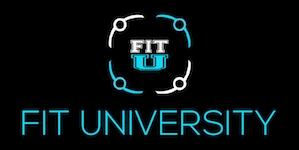So, you pulled your back doing deadlifts. Or maybe you’ve been having some serious IT band issues while you squat, or you might have even tripped down a step and found yourself stuck with a pair of crutches and a sprained ankle a week before your next race.
Injuries are a part of life, unfortunately, and somehow they always seem to happen during the most inconvenient times. When we’re faced with one, our training has to take a sideline to recovery. But that’s no excuse to just lie around moping until you’re all healed! It’s still possible to maintain your fitness, even when you find yourself in the recovery zone.
Here’s my 4-step guide to injury recovery:
- RICE
This acronym is old as time, and great if you have a soft tissue injury — Rest, Ice, Compress, Elevate. When you first become injured, you have to immediately slam the breaks on training and get yourself back to a place where you’re at least on your feet. Resting keeps you from further injury while ice, compression, and elevation help to reduce the pain and swelling. Grab an ice pack and an ace bandage, pop a few pillows down and elevate your injury above your heart lying down, and take it easy for a day or so. This is the step where training and fitness need to be pushed to the sideline, and you need to put your recovery first.
Eating a healthy and balanced diet becomes a number one priority while you’re off your feet and your activity levels are down. Oftentimes, our diets become molded around our training schedule. Got an 8-mile run in a few hours? You eat a carb heavy breakfast. Just went for a 2-hour heavy lift session? You eat all the protein. But as you let your injury rest, you won’t have these guiding cues. Make sure you’re not over- or under-eating. Eat when you’re hungry, and make sure you’re eating nutrient-packed foods to help your body speed through recovery.
- Cross training and baby steps
Just because one part of your body is injured doesn’t mean the rest isn’t working! With your doctor’s approval, start to incorporate cross training to your routine as your injury heals and as you start to get back on your feet. If it’s a foot or leg injury, try seated freeweight exercises or a quick ab workout. If you can’t go all out with your cardio yet, swap running for running in the pool, or hop on a machine such as a stationary bike or elliptical to get your heart rate up for a bit. As you heal, make sure you’re focusing on strengthening exercises for your injury, as the muscle group it effects will be noticeably weaker even once it’s healed. Talk to your doctor and do some research on the best exercises for you to be doing to cross train your way to a complete recovery.
- Think Positive
Injuries happen, and there’s no doubt about it: they suck. There is nothing worse than being sidelined from what you want to be doing most and it is 100% understandable to feel angry and upset about being forced to take some time off. As hard as it may be, try your best to keep that negative attitude at bay and focus instead on doing everything you can to recover as quickly and as well as possible. A negative attitude will only make your injury seem worse, your pain feel stronger, and your recovery time seem longer. Your mind is a very powerful thing, so make sure you’re using it for good!
While these tips can definitely help you out during this time, make sure you’re still consulting your doctor about what treatment and/or recovery plan is best for you. Every injury is different, and doctors know best!
Injuries will always happen, and while they can be a minor setback for the time being, remember: they’re not forever! Rest up, cross train when you can, listen to your doctor’s orders, and focus on strengthening the injured area during and after recovery, and I promise you’ll be back to your normal routine in no time.

[…] What to do when an injury strikes […]
[…] What to do when an injury strikes […]